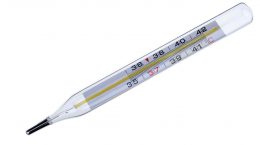Published on April 11, 2023
What to do with your elements panel results, and next steps to take after testing your magnesium and elements levels
 Have you recently measured your magnesium or elements levels, or are you considering doing so?
Have you recently measured your magnesium or elements levels, or are you considering doing so?
Today we share some information to help guide you through your results and what to do with them, or help you decide if they may be important for you to measure with your next home test kit.
Magnesium
One of the most important minerals in the body, magnesium is essential for energy production. Magnesium is also important for your brain and bone health, blood glucose control, DNA and genetic material, blood pressure, detoxification processes, and for helping activate vitamin D in your body. In fact, low magnesium can prevent vitamin D levels from increasing with supplementation and can alter the effects of vitamin D on health outcomes.
It’s believed that about 80% of Americans don’t get enough magnesium, and as you age, your body becomes less efficient at absorbing magnesium. The whole blood magnesium test offered by GrassrootsHealth includes the amount of magnesium in your blood cells as well as the plasma/serum, which is a better indicator of magnesium status than the serum magnesium test offered by most doctor’s offices and hospitals.
Learn more about the importance of magnesium and research involving magnesium, including in the areas of cancer, type 2 diabetes, mental-emotional wellness, COVID-19, cardiovascular health, and more.
Top Magnesium Blogs
The following are some of our top magnesium blogs about magnesium, research on the health benefits of magnesium, factors that may be affecting your absorption of magnesium, and what type to consider in your magnesium product.
How to Apply Your Magnesium Test Result for Better Health (including: What is the difference between serum magnesium, red blood cell (RBC) magnesium, whole blood magnesium, and ionized magnesium, and what do they say about your magnesium status?)
Sorting Through and Choosing the Right Magnesium Supplement for You
Epsom Salt Baths & Topical Magnesium
Health Issues Related to Magnesium Deficiency
Understanding the Balance between Magnesium, Calcium and Vitamin D
What Might be Affecting Your Magnesium Level Besides Intake?
Over Half Do Not Get Adequate Magnesium
Variability Among Magnesium Products
Elements Panel (Includes Magnesium)
It is important for our essential elements to be within their normal or optimal range in order to fulfill their roles in maintaining health. When an essential element is out of range, it can lead to disease or sub-optimal functioning. Some essential elements, such as selenium, copper and zinc, can become toxic when they are too high.
Toxic elements, such as lead, cadmium, and mercury, have no known nutritional benefit and are known to interfere with proper functioning of proteins, lipids, and DNA within the cells. They can also interfere with essential elements by blocking their availability within the body. Our Full Elements panel measures your levels of essential elements magnesium, copper, selenium and zinc, as well as toxic elements lead, cadmium and mercury.
The following are included in the Full Elements Panel along with magnesium:
Copper
Copper is an essential micronutrient, important for normal development of connective tissues, nerve sheath, and bone; it is needed in very small quantities, but when found in greater concentrations than necessary, will become toxic and can lead to liver dysfunction. Symptoms of copper deficiency can include neurological dysfunction and connective tissue abnormalities.
Too much zinc in the diet can lead to a copper deficiency, so it is important to also look at the zinc to copper ratio (Zn:Cu) to get a better picture of copper status.
The dried blood spot test for copper measures the amount of copper within the red blood cells as well as within the serum, and for this reason, can be more accurate and detect deficiencies earlier than a typical copper test of the serum alone.
Learn more about research involving copper and Copper Levels Among GrassrootsHealth Participants.
Selenium
Selenium plays an important role in thyroid health, free radical scavenging, DNA synthesis, and cancer prevention. The optimal therapeutic range for selenium is narrow, and excess selenium can become toxic. A severe deficiency of selenium may lead to impairment of anti-oxidant actions and thyroid functions, whereas an excess of selenium may lead to death.
The dried blood spot selenium test reflects the level of free selenium in the blood as well as selenoproteins. Heavy metals, especially mercury, may impair selenium’s function by binding to it and preventing its bioavailability. The dried blood spot test can be useful for determining if enough selenium is present to counteract that interference.
Learn more about research involving selenium, including topics such as immune health, COVID-19, breast cancer, thyroid health, and more, as well as Selenium Levels Among GrassrootsHealth Participants.
Zinc
Zinc is an essential micronutrient which is important for immune health; it is needed in very small quantities, but when found in greater concentrations than necessary, can become toxic. Deficiency in zinc can lead to compromised immune function and wound healing, and can also affect taste and smell. Zinc in excess of 15 mg/day can lead to copper deficiency, impaired immune function, and can also have negative effects on the LDL/HDL cholesterol ratio.
The dried blood spot test for zinc measures the amount of zinc within the red blood cells as well as within the serum, and for this reason, can be more accurate and detect deficiencies earlier than a typical zinc test of the serum alone.
Learn more about research involving zinc, including immune health, mental-emotional wellness, COVID-19, Signs, Symptoms, and Causes of Zinc Deficiency, and Zinc Levels Among GrassrootsHealth Participants.
Zinc/Copper Ratio
This test shows the ratio of the essential elements zinc to copper in the blood. These elements are considered antagonistic; excess of one can cause an imbalance of the other. For example, too much copper in relation to zinc can lead to toxicity and cause zinc deficiency, leading to dysfunction. An imbalance of these two essential elements has been correlated with oxidative stress, inflammation, and stress.
Learn more about the zinc to copper ratio among GrassrootsHealth participants.
Toxic Elements
The three toxic elements tested with this panel, cadmium, lead and mercury, are in the top four of what the CDC considers the most toxic heavy metals, according to their priority list of hazardous substances.
Lead
Lead is absorbed and taken up by the red blood cells where it binds to hemoglobin. Children are most susceptible to its negative effects. High levels of lead in the body have been associated with neurological defects in developing children, low levels of vitamin D, and reduced hemoglobin synthesis.
While the use of lead in certain industries and products has been discontinued, it can still be found in older plumbing systems, paint, and soil.
Learn more about the Damaging Health Effects of Lead and Lead Levels Among GrassrootsHealth Participants.
Cadmium
Cadmium, classified as a group 1 carcinogen, can be found in certain industrial environments and in soil. Certain plants and foods, such as tobacco, green leafy vegetables, potatoes and grains, peanuts, soybeans, sunflower seeds, and shellfish can contain high levels of cadmium.
While the primary source of cadmium for most individuals is from food, smokers tend to have about twice the toxic burden of cadmium than non-smokers. Individuals who work in the smelting, battery manufacturing, colored glass manufacturing, and waste incinerating industries tend to have higher exposure to cadmium.
Cadmium accumulates in the kidneys and thyroid gland, and can contribute to thyroid issues, infertility, uterine fibroids, and other reproductive tract diseases.
The dried blood spot test for cadmium is a reflection of short-term cadmium exposure.
Learn more about Cadmium Levels Among GrassrootsHealth Participants.
Mercury
Mercury is a highly toxic heavy metal that can collect in the body’s tissues, especially the brain, where it can cause damage to the nervous system. High levels of mercury are associated with paresthesia, mood changes, sensory disturbances, renal toxicity, respiratory failure, and even death. Since mercury has a high affinity to selenium, it can also bind to it and reduce its biological availability, leading to diseases caused by selenium deficiency, such as thyroid disease.
While some are exposed to mercury as an occupational hazard, most mercury exposure is due to consumption of fish and shellfish that contain methylmercury. The dried blood spot test for mercury is a good indicator of recent exposure to methylmercury. Other types of mercury include elemental mercury (found in batteries, thermometers, and dental amalgams), and inorganic mercury (found in mercuric chloride and skin-lightening creams).
Learn more about Mercury Levels Among GrassrootsHealth Participants and How to Address a High Mercury Level.
Need help eliminating some of these toxic metals? Learn more about Heavy Metals and the Power of Detoxification.
Other Important Measurements to Include with the Above
What else can you test with your home blood spot kit?
- Vitamin D
- Magnesium PLUS Elements
- Omega-3 Fatty Acids
- hsCRP
- HbA1c
- TSH
- Type 1 Diabetes Autoantibodies
Did you know that each of the above can be measured at home using a simple blood spot test? As part of our ongoing research project, you can order your home blood spot test kit to get your levels, followed by education and steps to take to help you reach your optimal target levels. Start by enrolling and ordering your kit to measure each of the above important markers, and make sure you are getting enough of each to support better mood and wellbeing!
Create your custom home test kit today. Take steps to improve the status of each of these measurements to benefit your overall health. With measurement you can then determine how much is needed and steps to achieve your goals. You can also track your own intakes, symptoms and results to see what works best for YOU.
Enroll in D*action and Test Your Levels Today!






